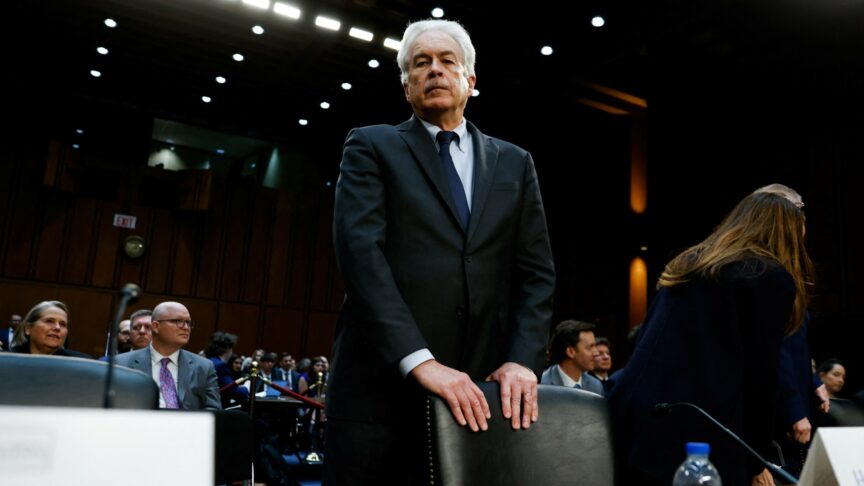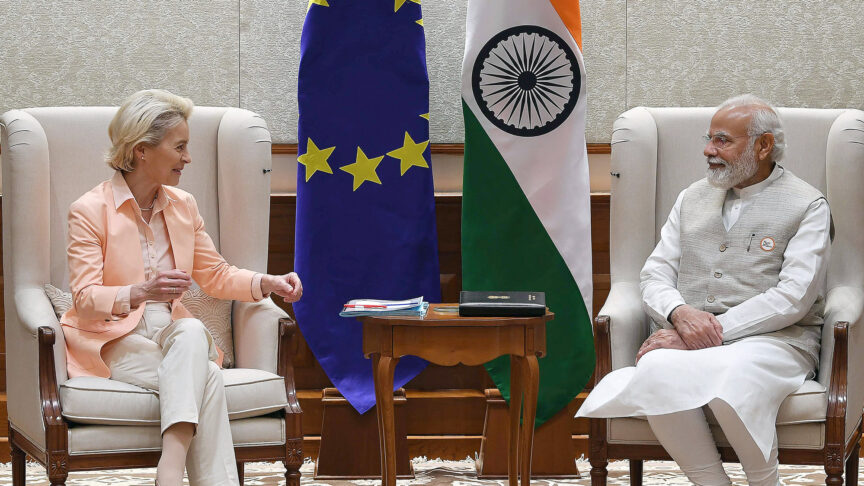Managed chaos: Russia’s deal with Turkey on northern Syria
Russia is now in charge of a multi-front war. It will need to manage relations between multiple local actors very carefully.
Following their meeting in Sochi on 23 October 2019, Russian President Vladimir Putin and his Turkish counterpart, Recep Tayyip Erdogan, announced a ceasefire deal for northern Syria. The agreement laid the foundation for extending Bashar al-Assad’s rule over north-eastern Syria, secured the Russian military presence across the whole country, and formalised the Turkish military deployment in the region close to its northern border. For the Kremlin, the agreement signals that the Russian-backed regime has conclusively won the war in Syria.
Few in the West expected this victory when Russia intervened in the Syrian war in September 2015. Moscow’s goals were to ensure the survival of the Assad regime and reduce US influence in Syria – but the extent to which this would be possible was unclear. Victory then fell into Putin’s lap after both the Obama and Trump administrations failed to create a coherent strategy on the conflict. The latter’s erratic manoeuvres also prevented any European country from easing the burden on US forces deployed to Syria.
Putin likely sees the close strategic alliance he forged with Erdogan after the attempted coup in Turkey in 2016 as instrumental to Moscow’s victory. This alliance led to the launch of the Astana peace process with Turkey and Iran – thereby killing off the Geneva talks, which, unlike those in Astana, involved US-backed forces. While the Astana process did not immediately produce results, it prevented any political settlement in line with Washington’s interests. Yet even this diplomatic victory would not change the fact that US-backed forces controlled north-eastern Syria. Because it had no means to remove US forces on its own, Russia feared that, in the long term, the United States could use the area to stage further military action against Assad.
In its military campaign against Syrian opposition forces, Russia prioritised operations in western Syria. Meanwhile, the Turkish operation against the Kurdish enclave of Afrin served as a template for further cooperation between Russia and Turkey. Military pressure from both countries pushed Kurdish forces out of the area, granting Turkey a foothold near its southern border and helping Russia prevent the US from establishing a military presence in western Syria.
Turkey’s attempts to use Islamist fighters against Kurds in north-eastern Syria are a gift to Russia.
Idlib province – which was controlled by opposition forces that included Turkish-backed Islamist fighters, some of them extremists – was the other rebel stronghold in Syria. Assad wanted to regain control of the area but could only do so through a massive use of force and by engaging in ethnic cleansing there, as the conservative Sunni population would hardly accept the presence of regime troops. Moreover, Idlib’s terrain is poorly suited to the kind of mechanised warfare for which Russian military advisers have trained the Syrian army. To defeat the rebels in Idlib, Russia would have to weigh in with more of its own forces – a move that the Kremlin would find difficult to justify to a domestic audience.
Turkey’s attempts to use these Islamist fighters against Kurds in north-eastern Syria (thereby drawing the fighters away from Idlib) – and its alleged plans to use Sunni refugees from across Syria to replace the Kurdish population in the area – are a gift to Russia. These moves could not only allow Assad to advance into Idlib, but could also intensify military pressure on the Kurds in the north-east, increasing tension between Turkey and its key NATO ally, the US. Therefore, Putin had no reason to dissuade Erdogan from launching the Turkish incursion into northern Syria.
The Trump administration’s abrupt withdrawal of the American protective umbrella from the Kurdish-led Syrian Democratic Forces (SDF) presented Russia with more unexpected risks and opportunities. The withdrawal left the Kurds so vulnerable that they accepted Russian and regime forces as a deterrent against the Turkish military in north-eastern Syria. To maintain pressure on the Kurds, Moscow reconfirmed the 1998 Adana agreement between Syria and Turkey, allowing Ankara to cross the border to crush Kurdish forces. This left the SDF at the mercy of whoever was willing to protect it. While the group could fend off the Islamist fighters Turkey uses as a proxy force, it had little chance against the regular Turkish army.
This has left Moscow with the issue of how to deal with the SDF. The Kremlin likely does not trust anyone who once cooperated with the Americans. In the coming months, it would not be surprising if key SDF leaders fell victim to accidents or voluntarily sought exile, to be replaced by personnel more loyal to Moscow. The flexible arrangements of temporary ceasefires and the loosely defined arrangement of Turkish-Russian “joint patrols” provide ample room to Moscow to negotiate a transition of power. So far, Assad’s forces have moved into north-eastern Syria while taking up positions far from the “safe zone” that Ankara aspires to control. For the time being, they are neither an intervention force nor a deterrent – but they have moved east. Although these forces might take on such roles in the future, this will depend on the deal they get.
In the meantime, the Turkish incursion has paused but not ended. Turkey has put its alleged plans for ethnic cleansing on hold (partly due to the public outcry in the West), but has not abandoned them. In this environment, Moscow can intensify military pressure on the Kurds if it feels the need to do so. Moscow still wants to avoid the burden of controlling eastern Syria directly through its military but, for now, it lacks the proxy structures to do so.
Russia entered the war fearing an American campaign of regime change. It had the strategic advantage of concentrating its efforts on the single objective of protecting Assad, meaning that it only had to blunt diplomatic and military efforts to unseat him reactively. Now, given that it is in charge of a multi-front war, Russia will need to manage relations between multiple local actors very carefully. The Kremlin likely never anticipated that it would take up such a prominent role.
Russia will not only have to deal with the Kurds as they try to preserve as much independence from it as they can afford, but will also have to manage Iranian-Israeli clashes. Iran, Israel, and Turkey are all in a position to undermine Moscow’s efforts but unable to control events in Syria using only their own resources. Thus, there is little reason to think that Syria will become any more stable in the coming months.
The European Council on Foreign Relations does not take collective positions. ECFR publications only represent the views of their individual authors.


